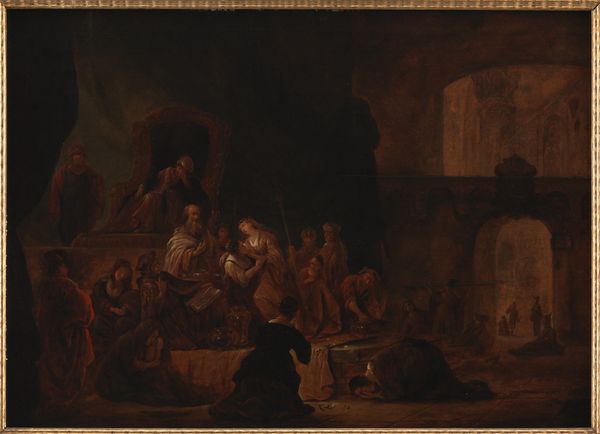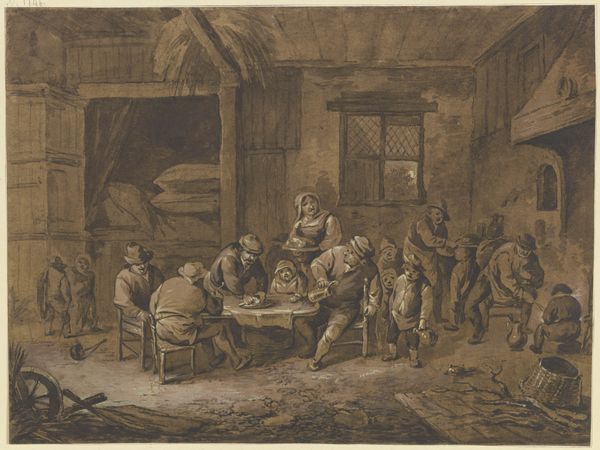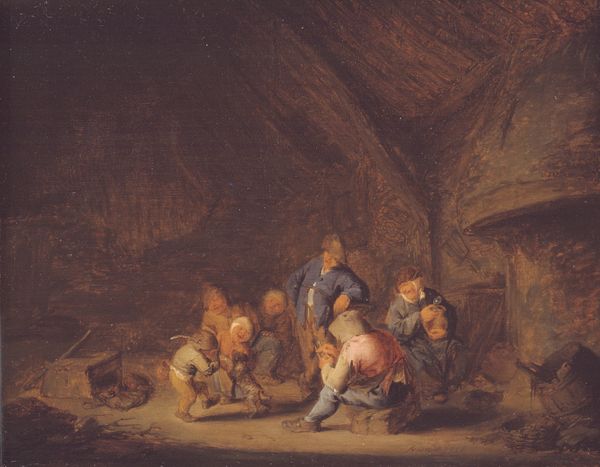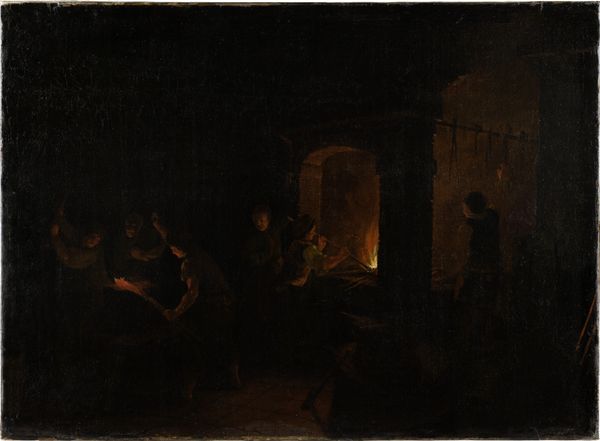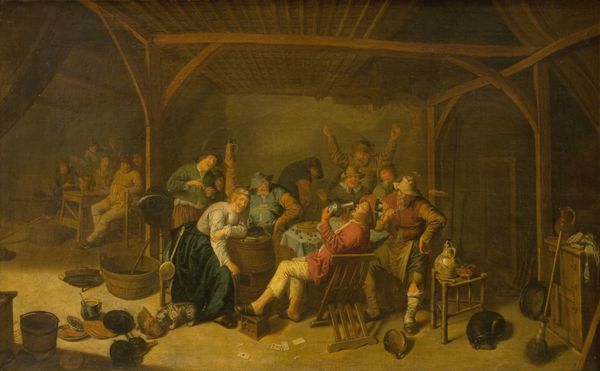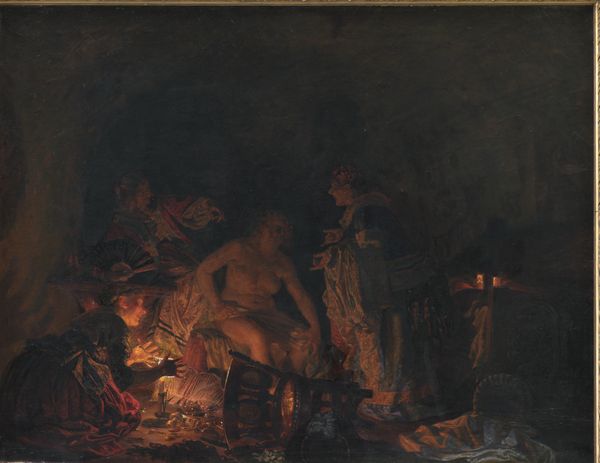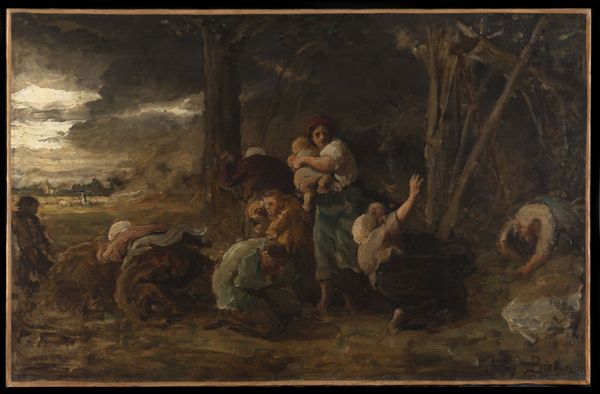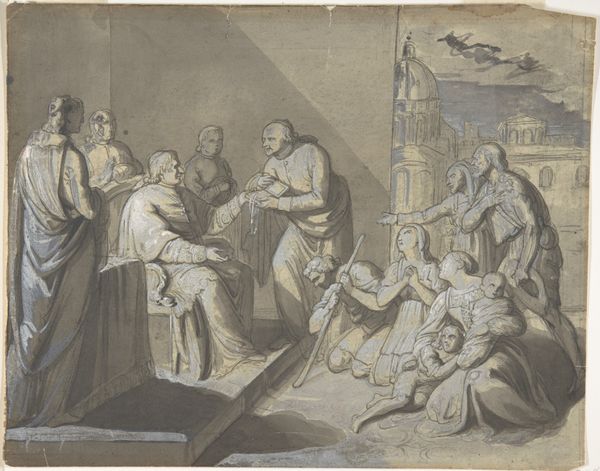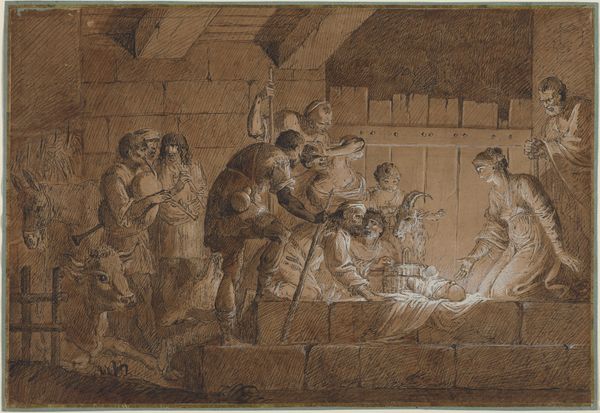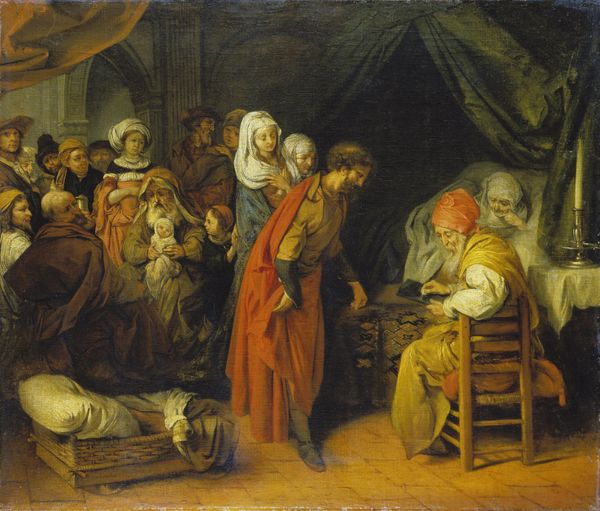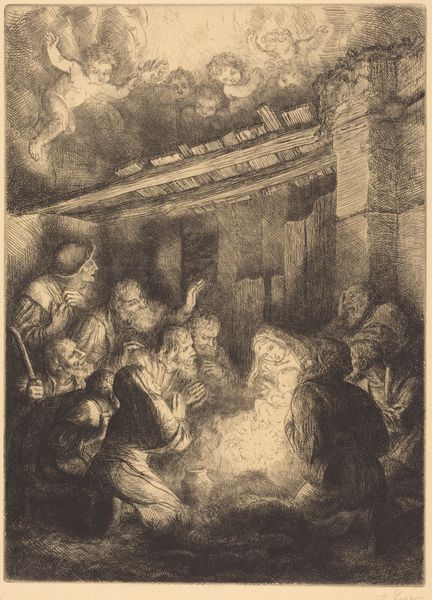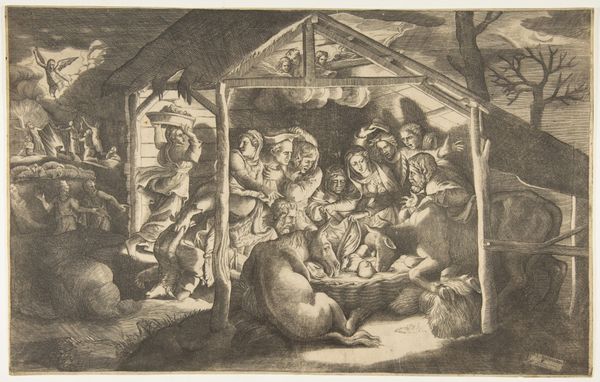
painting, oil-paint
#
narrative-art
#
baroque
#
painting
#
oil-paint
#
figuration
#
men
#
history-painting
#
academic-art
#
christ
Dimensions: 35 1/8 x 41 3/8 in. (89.2 x 105.1 cm)
Copyright: Public Domain
Curator: Standing before us is Christian Wilhelm Ernst Dietrich's oil painting, "Christ Healing the Sick," created in 1742. Editor: The immediate feeling is… oppressive. So many figures crammed into a darkened space, almost like they're emerging from the shadows, desperately seeking light. Curator: The composition directs our attention straight to Christ. Notice how the figures surround him, creating this sort of radial pattern. He’s the focal point, but he's also integral to understanding the economic anxieties of that era; it's about the patron commissioning a hopeful depiction. Editor: Hope, maybe, but there’s also profound inequality visualized here. The sick are literally at his feet, begging. How does the representation of poverty here speak to larger systemic issues of access to care and power at the time? Curator: Well, it speaks to a clear understanding of academic art. The baroque style lends a certain weight to that, and observe the labor it takes to render details like skin texture; these are technical displays reinforcing socioeconomic distinctions. Editor: Right, this is Baroque opulence, designed for an elite gaze, meant to inspire awe at divine power, but also perhaps, tacitly condoning existing social hierarchies by presenting suffering as something that can only be alleviated by an outside, divine force rather than social change. Were there contemporary artistic critiques to these presentations of hierarchy? Curator: Certainly, and Dietrich’s workshop and process matters greatly; as the leader, how much labor from assistants shaped its creation? I mean it speaks to a complicated process. Editor: Absolutely, and understanding Dietrich within the history of representational violence is key. I keep coming back to the wheelbarrow in the lower corner – someone has to haul that, the abject nature of care labor visualized so starkly. The visual elements underline the material hardship and also call us to confront realities, and the politics inherent in visual narratives like this. It is never simple, and about process; who benefits? Curator: Ultimately, it offers a valuable opportunity to examine those 18th-century artistic practices through our lens, allowing reflection and social critique about labor practices. Editor: It truly does…revealing narratives, in order to dissect power, that might be exactly the uncomfortable but urgent conversation it sparks even now.
Comments
No comments
Be the first to comment and join the conversation on the ultimate creative platform.
